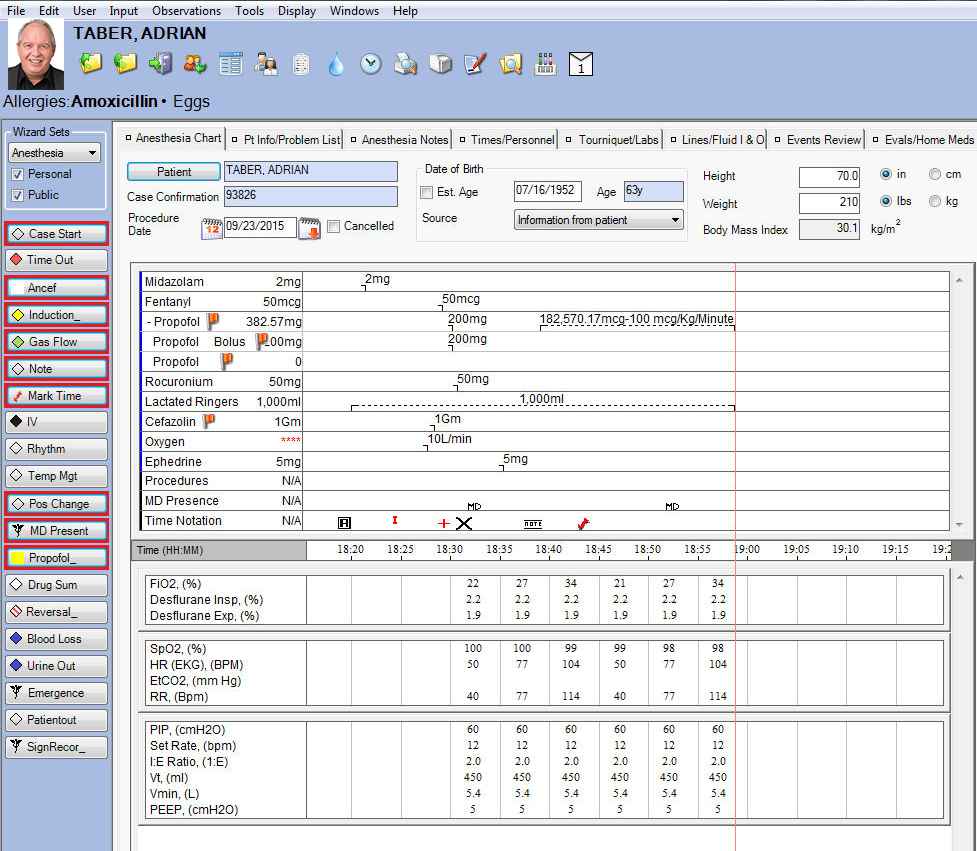Hospitals nationwide are increasingly migrating from paper records to electronic anesthesia record software, and with good reason. Make that good reasons.
Benefits of Electronic Anesthesia Record Software
Here are just five of the benefits of an anesthesia information management system (AIMS).
1. Reduce anesthesia provider cognitive load in the OR
During cases, operating rooms (ORs) tend to experience high levels of activity, especially for those cases requiring more active management at the beginning of the case. An AIMS can help scale back an anesthesia team's cognitive load by automating documentation.
An AIMS can automatically pull in vital signs from patient monitors and anesthesia machines, allowing the anesthesia provider to focus on the patient, not the documentation. The software also can support anesthesia plans that predetermine the groups of medications, orders, block note templates, and airway defaults that will be used in the case and populated into the record.
With the cognitive load reduced, an anesthesia provider can focus more on caring for the patient and then documenting retrospectively.
2. Gain easy access to information
An AIMS puts information at anesthesia providers' fingertips, so they never need to go hunting for information. This is particularly useful when preparing for a case. By having legible anesthesia documentation available from a previous case, an anesthesia provider might see that a patient has had a difficult airway in the past. The provider can then ensure that a video laryngoscope is available in the OR in case assistance is needed during intubation.
AIMS is also very helpful during patient handoffs. With an AIMS, finding case information electronically is simple, and that information is legible and easy to read. As The Joint Commission notes, its sentinel event database includes "reports of inadequate handoff communication causing adverse events, including wrong-site surgery, delay in treatment, falls, and medication errors." An AIMS strengthens handoff communication, helping keep patients safe.
3. Create a legible anesthesia record
Information that is easy to access and read undoubtedly improves patient safety. With paper records, anesthesia providers might spend upwards of 20 minutes or more going through historical information and attempting to decipher poor handwriting to determine if bad outcomes occurred in the past. An AIMS can flag pertinent positives ("an element of a patient's history that aids diagnosis because the patient affirms that it is present") for anesthesia providers to quickly identify and absorb.
4. Support a positive patient experience
An AIMS stores information about patients' previous surgeries. When a patient is informed that the anesthesia provider needs to update patient information rather than enter all of it from scratch, this provides comfort since it gives the appearance that the anesthesia provider already knows critical details about the patient.
In addition, when preop evaluations are completed prior to the day of surgery, an AIMS assists with ensuring nothing is missed that could contribute to a delayed or cancelled procedure on the day of surgery.
5. Generate significant data for analytics
By using an AIMS, anesthesia groups gain access to a wealth of performance metrics that can be leveraged during hospital contract negotiations. This can lead to increases in payment for the group, possibly with bonus money tied to quality metrics and performance.
Hospitals also benefit from the data captured in an AIMS by using it drive clinical improvement projects. For example, if a novel drug comes on the market, assessing value based solely on cost may make an investment not seem worthwhile. However, if the hospital had data that indicated the likelihood of cost savings via clinical improvement from usage of the drug, a strong case could be made to add the medication to the formulary.



























